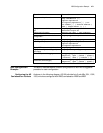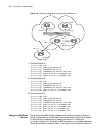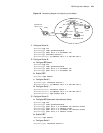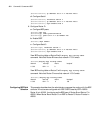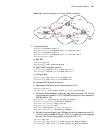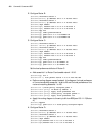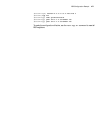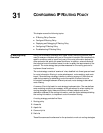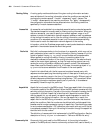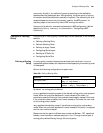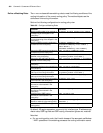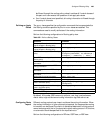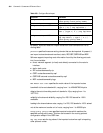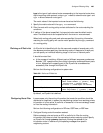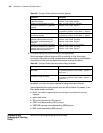
31
CONFIGURING IP ROUTING POLICY
This chapter covers the following topics:
■ IP Routing Policy Overview
■ Configure IP Routing Policy
■ Displaying and Debugging IP Routing Policy
■ Configuring IP Routing Policy
■ Troubleshooting IP Routing Policy
IP Routing Policy
Overview
During the information exchange with a peer router, the routing protocol may
need to receive or distribute only part of the route information that complies with
specific conditions; and to import only part of the route information learned by
other protocols that satisfy the preset conditions. In addition, some attributes of
the imported route information are set in order to satisfy the requirements of the
protocol. The route strategy also provides measures for the routing protocol to
implement these functions.
The route strategy consists of a series of rules, classified into three types and used
for route information filtering in route advertisement, route receiving, and route
import. Since defining a strategy is similar to defining a group of filters that are
used during receiving or advertising route information or before the route
information exchange between different protocols, route strategy is also called
route filtering.
A common filter is the basis for route strategy implementation. The user defines
some matching conditions as necessary, which are referred to when making the
routing strategies. Apply these conditions to different objects such as the
destination address of the routing information, and the router address publishing
the routing information, to implement route information filtering.
A routing strategy provides five filters:
1 Routing policy
2 Access list
3 Aspath-list
4 Community-list
5 Prefix-list
These filters serve as the reference for the protocols to work out routing strategies.



